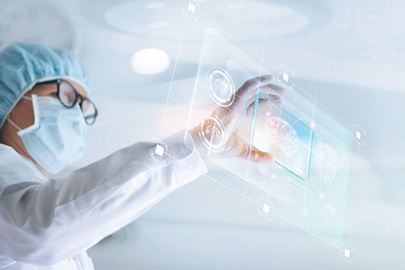14 November 2022
The Application of AI and IoT in the Healthcare Industry Today
Did you know, combining IoT and AI in the medical world is an advance in itself, especially in the healthcare industry?
The collaboration of the Internet of Things (IoT) with Artificial Intelligence (AI) results in rapidly improving medical services and better patient satisfaction, from the IoT side, there is accuracy and speed of data transfer enjoyed by clients. On the other hand, AI mimics the way humans get things done and learn from the patterns they create.
When combining IoT and AI in the context of the healthcare industry, there will be improved operational efficiency by easing the administrative burden on clinical staff. In addition, with improved clinical workflows, medics will be able to spend more time with patients, resulting in a more patient-centered approach to healthcare delivery.
One of the most significant benefits of IoT interoperability and AI is the ability to track what is happening and the reaction to it today. This requires a shift towards active patient engagement, customized treatment regimens that can be adjusted in real-time, and more sophisticated data management strategies.
Smart hospitals, aka more sophisticated health facilities, will not reduce the human touch desired by patients. This technology is simply a way of streamlining patient care procedures or allowing healthcare providers to monitor patients. The following are some examples of IoT and AI collaboration for the healthcare industry:
- Wearables Wearables
Wearables can monitor a patient's heart rate, blood oxygen levels, sleep habits, breathing patterns, and other important health information. Your patients are already familiar with millions of people using personal health monitors like Fitbit and Apple Watch, so it won't be unusual for them to apply similar technologies while in medical care. On the other hand, healthcare IoT developers are constantly exploring new applications with wearable technologies. One example is fall detection. Fall Call Solutions has created the Apple Watch fall detection software. - Bidirectional monitoring
The patient and the doctor can communicate with each other through connected blood pressure monitors, which can help build a picture of the patient's overall health. Patients can take tests at home regularly and easily share the results with their doctors. In addition to blood pressure, a similar method can also be done to monitor the patient's glucose. This can assist patients in managing their care at home while also collecting useful data over time. Traditional glucose monitors can be connected to smartphones for data collection and newer continuous glucose monitoring (CGM) systems.
Save time, cost, and energy through efficiencyThe patient does not need to rush to the hospital to show the doctor his medical report. From the patient side, he can save money. Personal assistants using artificial intelligence can make medical recommendations to patients. They can also connect patients with doctors directly for consultation sessions, lowering the cost of going to the clinic or hospital. AI reduces the number of unnecessary clinic visits, and medical staff can give more attention to patients who actually need face-to-face consultations.
Automation of administrative processesAdministrative work sucks time and energy from hospital staff. Technology can help automate a variety of tasks in healthcare, including managing patient appointment requests, patient registration, reviewing payment claims and complaints, denials and appeals, data entry, care coordination, provider data management, and credentials as finance and accounting and billing.
So, are you ready to implement IoT and AI in health facilities for your customers? Immediately consult your needs with Telkom DWS!
Is this information helpful?
